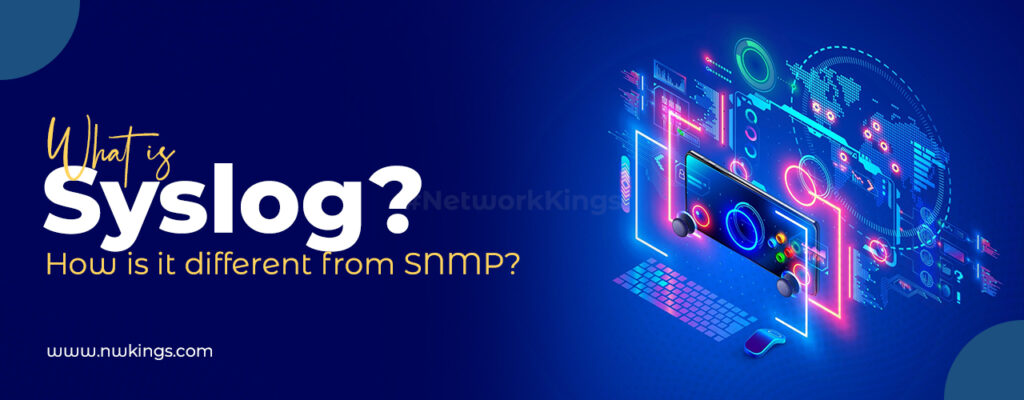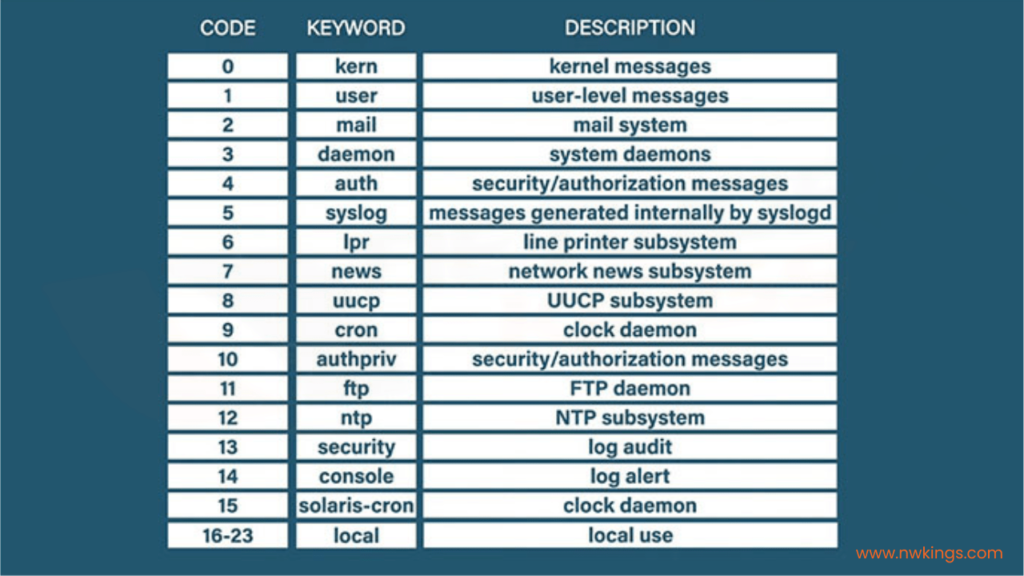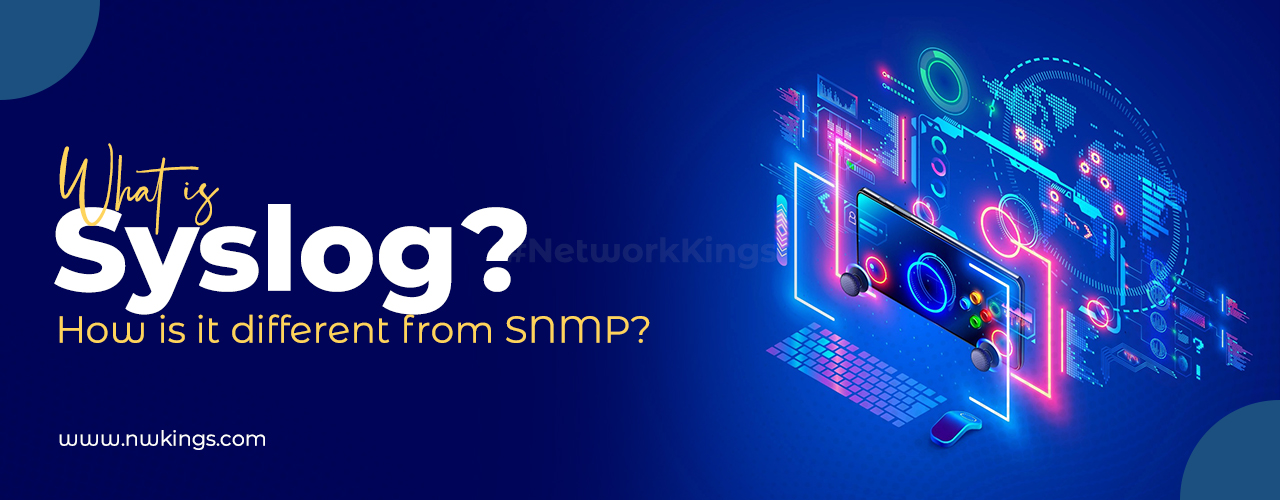
Be it any network, a large number of network devices are connected to each other. Each of the network devices such as a computer has different logging details. These could include warning logs, error logs, and security logs. For example, if you are a windows user, you can check different loggings on your PC as windows store all of them. This is what Syslog does. It stores computer message logging. These come in handy when a Network Administrator wants to check logging information.
Syslog is quite similar to the Simple Network Management Protocol (SNMP) in its work. However, they are still different in their work and usage. We will learn about the difference between them later on!
Let us start learning about Syslog.
Note: If you haven’t read the previous blog of our CCNA 200-301 series, I highly recommend you do so.
What is Meant By Syslog?
A Syslog is a service that uses computer message logging. This means that it allows all the logging information from the network devices to be stored in one place. This place is a server which is called the Syslog server.
All the log messages that are collected are sent on UDP port 514 to the Syslog server. This is exactly the location where we can search, archive, and analyze all the logging information. All the messages sent by different network devices are free and in a text format.
This logging method has been adopted since the 1980s. Since then, accessing event logging information has been easier than before!
Why Do We Need Syslog Servers?
All the network devices that we use such as routers, switches, firewalls, gateways, etc. create and store logs about important events and statuses in them. These logging events can be easily accessed through these devices in small networks or systems.
However, it becomes very difficult to access this information in the case of big systems. This is where the Syslog acts as a savior. This Syslog has a logging server which is called the Syslog server. These servers send diagnostic and monitoring data.
A Syslog can run on Unix, Linux, Windows, and even on Mac OS. Some of the names of the Syslog servers in Windows machines are as follows:
- Kiwi Syslog Server
- PRTG
- SNMPSoft Sys-Log Watcher
- Visual Syslog Server
- The Dude
- Datagram
All of these servers offer different levels of functionalities and some of them can even run on Linux and Unix hosts.
What is Syslog Used For?
A Syslog is used in computer systems for the following tasks:
- Syslog is used for managing computer systems.
- It is also used for security auditing.
- A Syslog also makes the network admin aware about the general information, analysis and debugging messages.
- A syslog is used in different ranges of devices such as routers, printers, switches, etc.
- All the logging information from different types of devices into a central repository.
Therefore, Syslog is a very useful network standard that functions to monitor the best working of network devices to their full capacity.
How Does the Syslog Work?
You have two options to look at the Syslog messages. These are:
- You can watch it in real-time on a device’s console
- You can look at the recorded list of log files in the logging information
In case of recorded log files, most of the oldest files are overwritten by the newer files. This is how a Syslog typically works!
What Are the Different Logging Levels in Syslog?
In a real-world scenario, a network consists of network devices from many different vendors. In such a case, it becomes difficult for the Syslog to decode all of these incoming messages at one time simultaneously.
This makes it difficult for Syslog to differentiate between important emergency messages from the general messages. This is where the free-form Syslog is equipped by special fields called “facility” and “severity”.
Severity Codes:
The severity represents how important an incoming message is! It could be anywhere between 0 to 7.

This is how we can interpret the severity levels of an incoming message.
You can mostly ignore the debug messages as they are not that important and they are very common to see. Emergency level messages are very rare as when the system gets broken, you cannot see the incoming messages at all!
Facility Codes:
You can consider facility codes as search keys for messages. Most of the time all the incoming messages are dumped into the same files.
These messages are separated and collected in different files on the basis of their relations to each other.
The facility codes are also represented by numbers from 0 to 23.

The severity and facility codes are shown at the start of each Syslog message. They are present in angle brackets (<>).
For example, <126> would represent a “NTP subsystem” facility message of severity 6.
What’s The Difference Between SNMP and Syslog?
If you are aware about SNMP, you must be confused between the functioning of the two. Let us make it simpler for you!
SNMP uses Management Information Base (MIB) in the SNMP server that collects and organize information. Therefore, SNMP traps are quite useful here.
For example, you use an in-house application for business purposes. In such a case, tons of messages are generated which can make it difficult for MIB to decode each of the messages in one go and send it to the central system. In such a case, Syslog will work in a better way as it keeps the central system/repository up-to-date.
Therefore, SNMPs are used when the events are well-defined like interface resets in network devices.
On the other hand, Syslog is best used in cases when the events are more general in nature and they are not predictable.
Bottom Line:
The Syslog messages are a better way of monitoring the logging events and files as compared to the Simple Network Management Protocol (SNMP). However, it completely depends on the user’s demands and requirements.
In this blog we have learned about the working and uses of the Syslog. We have also learned about the importance of messages and how to decode the severity and facility codes. We also learned about the differences between Syslog and SNMP.
Stay tuned for more blogs in the CCNA series!
Happy learning.


